Panasonic Lumix TZ30 Review
Panasonic Lumix TZ30
If you're looking for a small compact with a big zoom, the TZ30 could be an ideal choice.
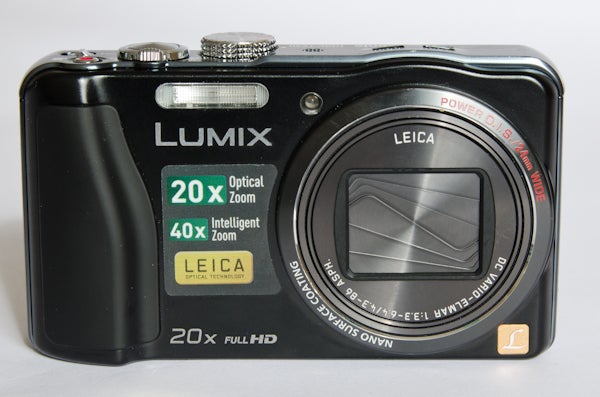
Verdict
Pros
- Huge zoom range offers great flexibility
- AF speed is some of the fastest yet seen in a compact
- Easy to use and feels well built
- Built-in digital filters and a one-touch panorama mode
- Generous range of Full HD movie recording options
Cons
- Still no ability to capture lossles Raw image files
- Choice of Full HD movie recording options can be confusing
- Battery performance still isn't great - especially with GPS on
Key Specifications
- Review Price: £280.00
- 14.1 megapixel high sensitivity MOS sensor
- 20x optical zoom (40x iZoom, 80x digital zoom)
- 3in, 460k-dot LCD touchscreen
- Fully and semi manual exposure controls
- Range of Crerative Control digital filters
- Light Speed autofocus (0.1sec)
The travel compact segment of the digital camera market is one of the most lucrative and keenly contested, with all of the major manufacturers keen to claim a share of the spoils. The main reason why travel compacts have become so popular is because of the flexibility they offer. Small and light enough to carry all day, most of the current crop also pack a 16-20x optical zoom, allowing you to capture wide-angle landscapes and also bring faraway subjects much closer without the need for a bag of lenses or a bulky superzoom.

Panasonic’s TZ line is well established and has been a firm favourite with consumers for the past few years thanks to a good range of features, easy operation and consistently good image quality. The Panasonic Lumix TZ30 succeeds the (still available) TZ20 as the company’s flagship travel compact, providing a number of useful upgrades over its predecessor. The most obvious of these is the extension of the optical zoom from an already useful 16x to an even more flexible 20x. In 35mm terms this equates to a range of 24-480mm.
Other notable improvements of the TZ30 over the TZ20 include a one-stop increase in sensitivity to ISO 3200, and the addition of a set of Creative Control digital filters – which includes such fan favourites as Miniaturisation and Toy Camera. The TZ30 also benefits from Panasonic’s ‘Light Speed’ autofocus module, which offers a claimed AF speed of 0.1sec in good light.
GPS functionality, which was already present on the TZ20, has also been given a boost in functionality with a series of pre-loaded maps – of 90 countries and over a million landmarks – supplied in disc form. Once you’ve uploaded the data for your chosen country on to the SD card inside the camera, the TZ30 is able to pinpoint your location on an in-camera map.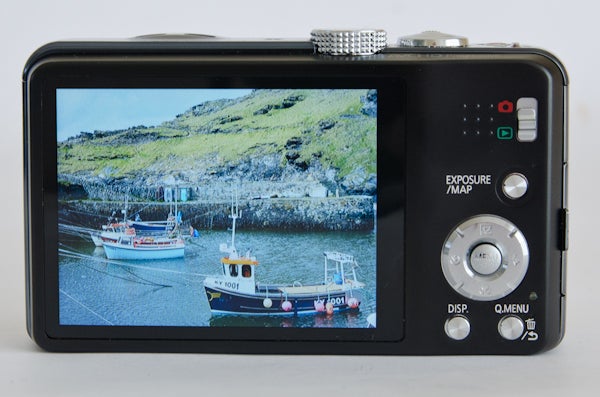
At it’s heart the TZ30 uses a 1/2.3in MOS sensor with an effective resolution of 14.1MP. While this is exactly the same as the TZ20, Panasonic claims that the TZ30’s sensor has been newly developed to work alongside the latest HD Venus image processor. Maximum output at the full 14MP in the default 4:3 aspect is 4320 x 3240 pixels, although there is scope to reduce file size by lowering effective resolution to 10, 7, 5, 3 or even 0.3MB. It’s also possible to change the aspect in-camera to produce images with a 3:2, 16:9 or 1:1, although as all of these effectively crop from the default 4:3 aspect resolution is slightly lower at all settings. Sadly, the TZ30 still lacks the ability to capture lossless Raw images for enhanced digital editing, although JPEG compression can be set to either Standard (more images) or Fine (better quality).
Exposure modes remain much the same as with previous TZ series, save for the addition of a selection of Creative Control digital filters – Expressive, Retro, High Key, Low Key, Sepia, Monochrome, High Dynamic, Toy Camera, Miniaturisation and Soft Focus. These can be used to add fun effects to images (and movies) without the need for any image editing software. 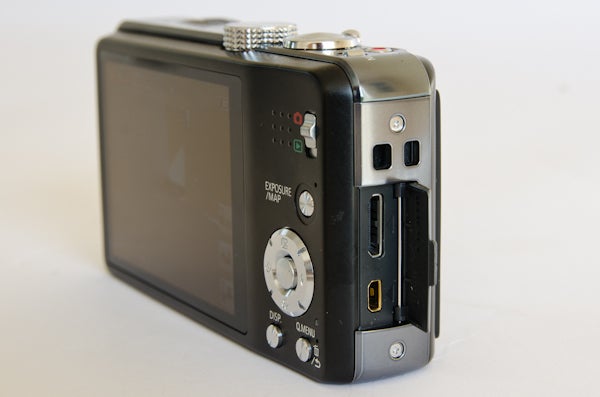
Regular exposure modes include Program, Aperture-priority, Shutter-priority and Manual (PASM). While it’s good to have the options, it’s worth bearing in mind that the Leica lens only offers an aperture range of f/3.3–f/8, which does limit your possibilities somewhat. Together with the small sensor anyone looking for something capable of producing a shallow depth of field effect is likely to be left disappointed.
The TZ30’s PASM modes are supplemented by Panasonic’s fully automated and consistently good iAuto mode, a 3D mode (3D image viewer required), and two user-defined Custom settings. Rounding things off is a range of 18 individual Scene modes that includes a one-touch Panorama mode (a new feature for Lumix compacts this year) and a High-Speed movie-recording mode.
Lumix compacts have built a good reputation for shooting HD video and the TZ30 continues this trend, improving slightly on the TZ20’s headline specs with a maximum recordable quality of 1080/60p (as opposed to 1080/60i on the TZ20). Sound is recorded in stereo via two microphones mounted on the top of the camera and there’s also a wind-cut option. Furthermore, it’s also possible to tag movies with GPS data. New for the TZ30 is the ability to record movies in the more computer-friendly MP4 format as well as the high-quality (but more HDTV orientated) AVCHD format that Panasonic has favoured in recent years. 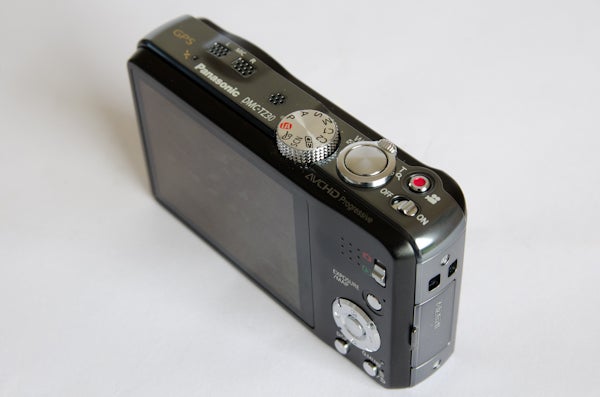
While the range of AVCHD quality options is certainly impressive we can’t help but think that the sheer number of options available – GPH 1080, PSH 1080, GFS 1080, FSH 1080, GS 720 and SH 720 – will just end up confusing some users. In this respect the TZ30 would really benefit from some clear in-camera guidance as to which setting would best suit a range of situations. As things stand the camera merely indicates the headline resolution for each option, which isn’t really all that helpful if you’re an AVCHD novice.
Unlike previous Lumix TZ models the battery of the TZ30 is charged in-camera via a USB to mini USB lead. There’s no standalone battery charger in the box either, although it is possible to charge the camera via your computer by removing the USB lead from the AC mains adaptor and plugging it straight in – it’s quite a lot slower than using the mains though.
Battery performance isn’t great, especially with the GPS turned on. We barely managed 150 photos before the red battery bar of death began to flash and the camera switched itself off, and this was with the GPS only switched on intermittently. Those who want to make good use of the GPS features are therefore advised to invest in a spare battery.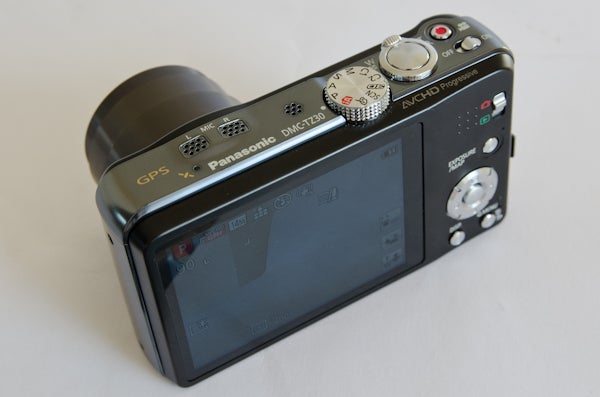
Physically the TZ30 is almost identical to its predecessor, albeit a little bit thinner and lighter. All-day portability certainly isn’t a problem either with the TZ30 easily small enough to slip inside a trouser, jean or coat pocket. Given the 20x focal range of the Leica zoom – which folds flush with the front of the camera when it’s switched off – it’s a pretty impressive bit of engineering to squeeze so much optical power into something so small and portable.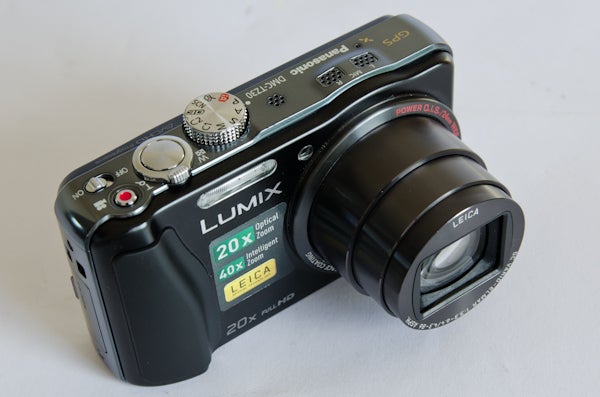
Build quality also impresses with the TZ30 given a predominantly metal finish. There’s also a wide steel band that wraps around the top and sides. The only real let down to build quality is the plastic battery/memory card cover, which feels a bit flimsy.
A sculpted finger grip sits on the front of the camera and unlike the TZ20 this has been given a rubberised finish for extra grip (the TZ20’s was metal). It provides a comfortable grip for one or two fingers and offers enough purchase to allow for secure one-handed operation of the camera. There’s a good spread of physical buttons too, all falling within easy reach of your right hand. Buttons are all steel, no doubt to give the TZ30 a bit more of a premium feel. The exposure mode dial on our review sample was slightly dented when it arrived though, which suggests to us that it’s not actually all that durable.
The spring-loaded zoom switch takes 2.7sec to fully extend the zoom when fully held down. Those looking for finer control will find approximately 45 individual stops between the wideangle and telephoto extremes when the zoom rocker is lightly feathered. Zoom operation is relatively quiet, although our test model did emit some undesirable ‘ripping’ noises towards the telephoto end of the zoom, as if something within the barrel was either catching or slightly misaligned. Bearing in mind the aforementioned damage to the exposure model dial hopefully this was just a one-off and unique to our test model.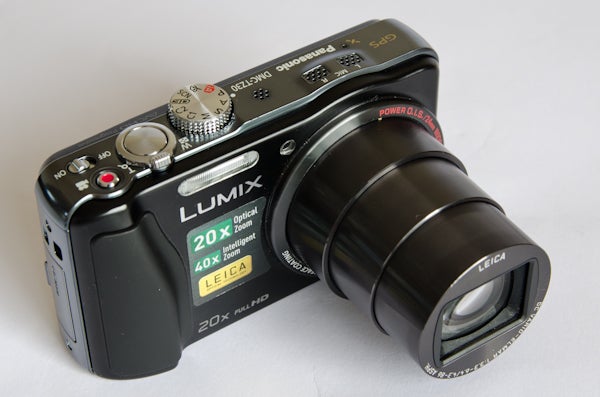
A 3in, 460k-dot LCD monitor sits on the back of the TZ30, which offers a bright and sharp display that remains easy to view in sunny conditions. The display also offers some touch-screen control over the camera, although there are limits to what it can control. For example, you can’t change the exposure mode using the touch-screen; this can only be controlled via the exposure mode wheel on the top of the camera. Also, while you can select a sub-menu from the Main Menu display you’ll need to use the D-pad to navigate within each sub-menu. The TZ30 does offer on-screen Touch Focus and Touch Shutter functionality though, along with control over the zoom. Sensitivity is quite good with the camera consistently registering your finger-prompted commands first time.
General performance is generally quite impressive, especially the speed of the 23-point ‘Light Speed’ autofocus module. AF modes offered include Face Detect, subject Tracking, 23-area auto, 1-area (central) and Spot, which should be enough to cover most situations. In testing we found AF to be all but instant in good to moderate light, even when the camera is being used at the furthest reaches of its telephoto range. Even in poor light the AF remains relatively fast and accurate, especially when the camera is used at wideangle settings. It does, however, begin to struggle as you extend the zoom towards the telephoto end. In really dark situations a built-in AF Assist light can be called upon to help focus on subjects that are close to hand.
Overall image quality is pretty good – especially when you consider the amount of zoom power the TZ30 manages to pack inside its diminutive little body. Used on the ‘Standard’ My Colour setting in iAuto mode the TZ30 produces pleasingly lifelike images that tread a happy medium, being neither overly muted nor overly saturated. Of course, should you want to boost vibrancy you can opt for the ‘Vivid’ setting, or indeed call upon the ‘Expressive’ Creative Control digital filter (although we’d advise some caution with the latter option as it really does ramp up saturation levels to non-lifelike levels).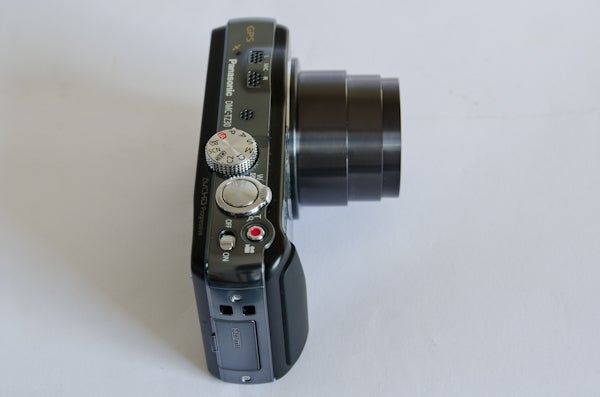
Metering is generally quite accurate, although as with the vast majority of small-sensor compacts dynamic range is somewhat limited. When shooting a high-contrast scene the TZ30 will tend to give preferential metering for whatever is inside the AF boxes (especially when the camera is used in single AF mode). For this reason, it often pays to use the focus-recompose technique to find a happy medium when metering high-contrast scenes, otherwise you can expect to see blown highlights or indistinguishably dark shadow areas.
With Panasonic’s Power O.I.S (optical image stabilisation) switched on, the TZ30’s 20x zoom is capable of producing pleasingly sharp results, even when shooting handheld at higher telephoto settings. Under really close scrutiny (i.e pixel peeping at 100% or more) it quickly becomes apparent that some fairly aggressive in-camera processing/sharpening has taken place. However when images are viewed at more regular sizes (think full-screen on a 15in laptop) this really isn’t a problem and images look pleasingly sharp.
In addition to the improved optical zoom, the reach of the TZ30’s i.Zoom (intelligent Zoom) has also been increased to 40x (from 21x), while the digital zoom offers a staggering 80x magnification. While the iZoom can produce pretty good results when used in moderation, using the digital zoom does cause image quality to deteriorate quite rapidly. 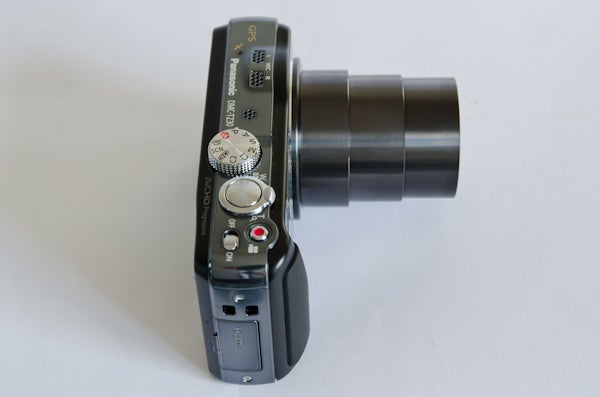
The TZ30’s zoom benefits from nano surface coating to reduce ghosting and flare and two ED elements to reduce chromatic aberrations. While the ED elements certainly help to cut down on purple fringing, it doesn’t quite eliminate the problem altogether. Ghosting and flare is quite well controlled though.
ISO performance, as with so many compacts using a small 1/2.3in sensor, is a bit of a mixed bag. At the lowest settings of ISO 100 and 200 the TZ30 captures noise-free images, however by as low as ISO 400 some visible noise does begin to creep into images. This becomes more pronounced at ISO 800 and clearly visible – even at smaller image sizes – at the top settings of ISO 1600 and 3200. Thankfully, automatic white balance is consistently reliable though, with only the occasional slip up.
Verdict
The Panasonic Lumix TZ30 is a 14.1MP travel compact that offers the flexibility of a 20x optical zoom alongside touch-screen control and the ability to record 1080/60p Full HD movies. In terms of the improved specifications it’s certainly a worthy successor to the TZ20, however given that the older model is currently available for around £80 cheaper, the value equation is somewhat less clear-cut. Personally, we’d be more inclined to go with the newer model, on account of the longer zoom and additional features, although ultimately both models represent a pretty sound investment for anyone seeking a trustworthy travel compact.

At ISO 100 the TZ30 keeps noise at bay.

ISO 200 shows a minor loss of detail, but the image is still intact.

At ISO 400 the image begins to soften as noise begins to creep in.

At ISO 800 the TZ30’s built-in noise-reduction has begun to noticeably soften detail in an effort to control noise.

By ISO 1600 noise is quite visible throughout the image.

The top setting of ISO 3200 is both noisy and soft.
Taking the TZ30 out of the studio for a moment, here’s how it performs when faced with a ‘real-world’ low-light situation. Note that all of the following images were taken using a tripod and the TZ30’s self-timer.
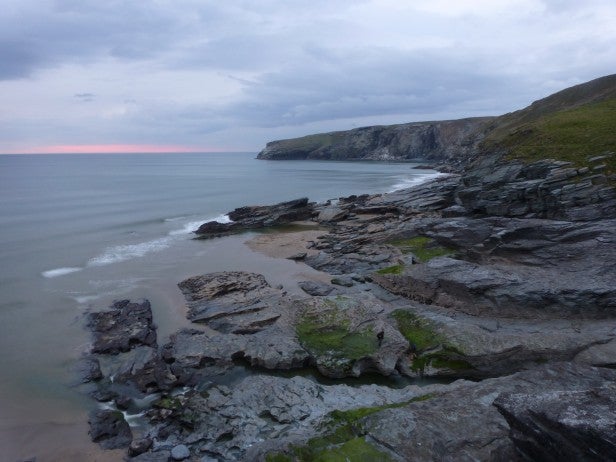
Using ISO 100 as the benchmark, the TZ30 has produced a pleasing twilight picture of Trebarwith Strand.
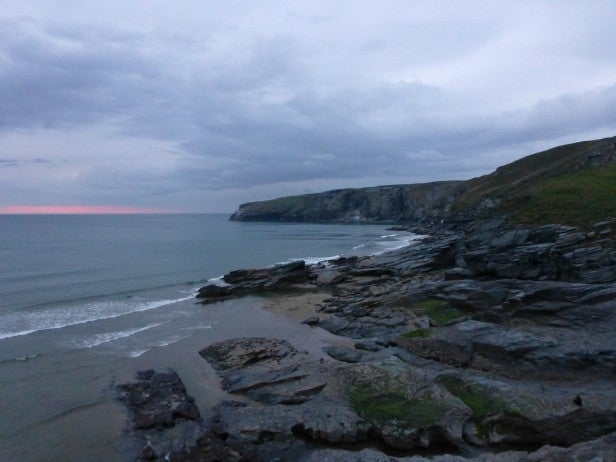
At ISO 800, the TZ30 can still capture a reasonable image, although it is pretty soft.
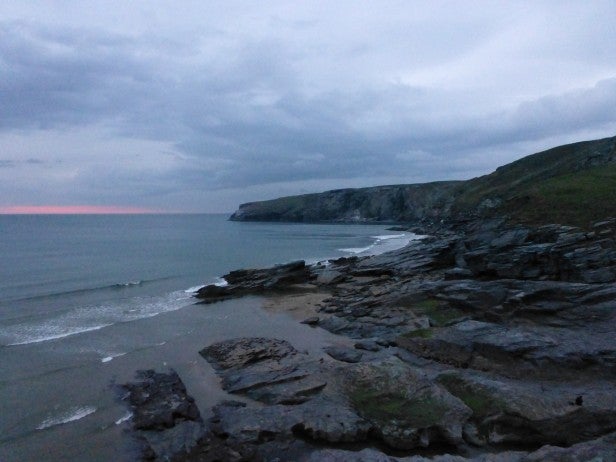
At ISO 1600 the image is noticeably soft and grainy – even at reduced sizes.
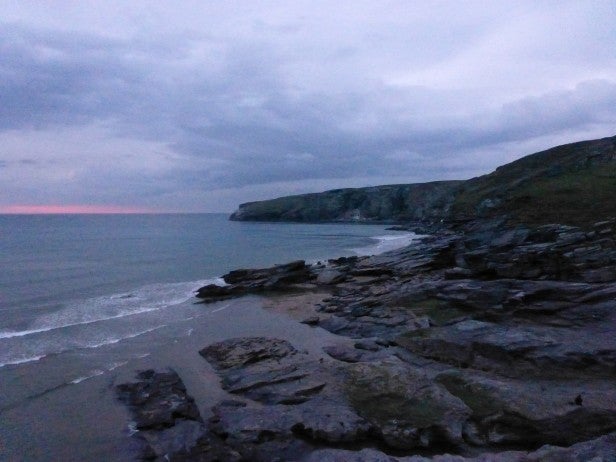
By ISO 3200 image quality has degraded considerably.
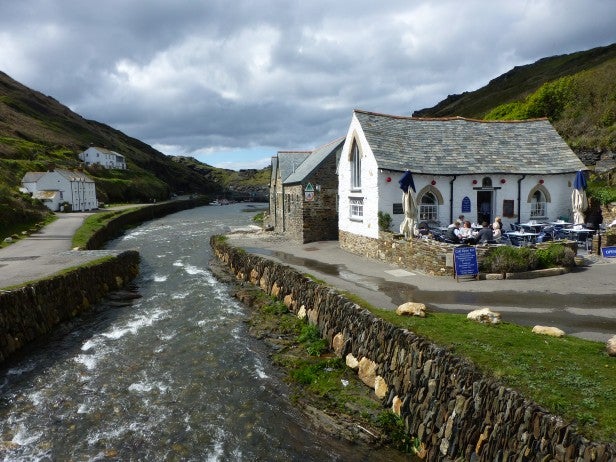
At its 24mm wideangle extreme the TZ30 is able to plenty in the scene.
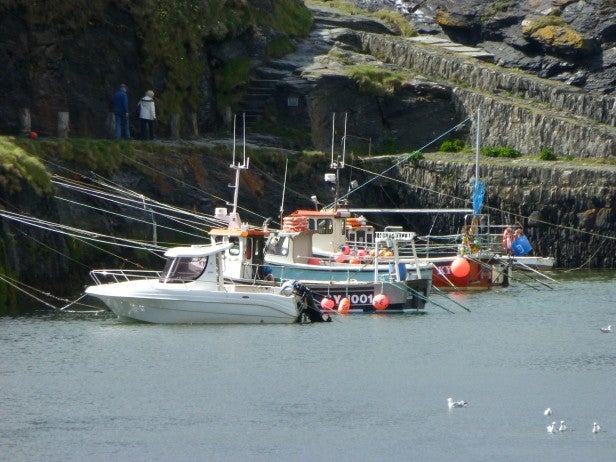
While at the other end – at 340mm – the TZ30 is able to bring the faraway boats in the harbour much closer.
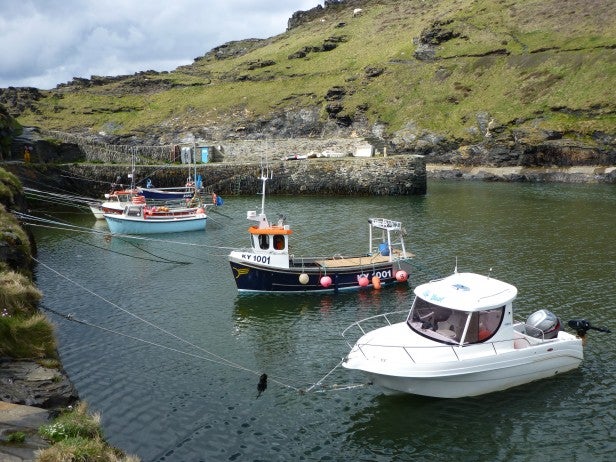
Used in good natural light the TZ30 is super-fast to focus and produces pleasing results.

On the ‘Standard’ My Colour setting the TZ30 produces pleasing, lifelike colour.

The Panorama setting within the Scene mode sub-menu is a useful feature to have.
Trusted Score
Score in detail
-
Value 8
-
Design & Features 9
-
Image Quality 8
-
Build Quality 8
Features
| Camera type | Micro Four Thirds |
| Megapixels (Megapixel) | 14.1 Megapixel |
| Optical Zoom (Times) | 20x |
| Image Sensor | 1/2.3in MOS |
| Optical focal length | 24-480mm |
| Shutter speed | 15-1/2000sec |
| Auto focus | 23-point contrast detect |
| Manual focus | No |
| Max output resolution | 4320x3240 |
| Other resolutions | [1:1] 3232x3232 (10.5M) / 2736x2736 (7.5M EZ) / 2304x2304 (5.5M EZ)/ 1920x1920 (3.5M EZ) / 1536x1536 (2.5M EZ) / 480x480 (0.2M EZ) / [4:3] 4320x3240 (14M) / 3648x2736 (10M EZ) / 3072x2304 (7M EZ)/ 2560X1920 (5M EZ) / 2048X1536 (3M EZ) / 640x480 (0.3M EZ) / [3:2] 4320x2880 (12.5M) / 3648x2432 (9M EZ) / 3072x2048 (6M EZ)/ 2560x1712 (4.5M EZ) / 2048x1360 (2.5M EZ) / 640x424 (0.3M EZ) / [16:9] 4320x2432 (10.5M) / 3648x2056 (7.5M EZ) / 3072x1728 (5.5M EZ)2560x1440 (3.5M EZ) / 1920x1080 (2M EZ) / 640x360 (0.2M EZ) |
| Focus range | Normal: Wide 50 cm - infinity / Tele 200 cm - infinity / Macro / Intelligent AUTO/ motion picture: Wide 3 cm - infinity / Tele 100cm - infinity |
| Exposure control | PASM, iAuto, 3D, Scene, Custom x2 |
| Exposure metering | Intelligent Multiple / Center Weighted / Spot |
| Exposure compensation | +/-1EV |
| Image Stabilisation | Power O.I.S |
| ISO settings | 100-3200 |
| LCD Monitor | 3in, 460k-dot |
| Viewfinder | No |
| Flash range | 0.6 - 6.4m |
| Flash modes | Auto, Auto/Red-eye Reduction, Forced On, Slow Sync./Red-eye Reduction, Forced Off |
| White balance modes | Auto / Daylight / Cloudy / Shade / Incandescent / White Set / White Balance Adjustment |
| Drive modes | Full- Resolution Image: 10 frames/sec Max. 10 images / with AF Tracking: 5 frames/sec, 2 frames/sec Max.100 images / Intelligent Burst Shooting / High- speed Burst: approx. 40 frames/sec (recorded in 5M) / approx. 60 frames/sec (recorded in 2.5M) |
| Image formats | JPEG |
| Picture adjustments | Creative Retouch / Auto Retouch |
| Video (max res/format) | 1080/60p Full HD |
| Movie length | 40-70min |
| Self timer | 2sec, 10sec |
| Memory card slot | SD |
| Supplied memory | 12MB |
| Batteries supplied | Yes |
| Charger supplied | No |
Physical Specifications
| Dimensions Width (Millimeter) | 104.9mm |
| Depth (Millimeter) | 28.2mm |
| Length (Millimeter) | 58.9mm |
| Weight (body only) (Kilogram) | 185.5kg |

